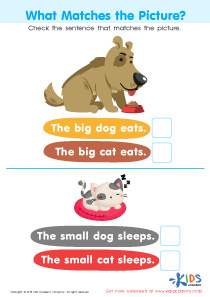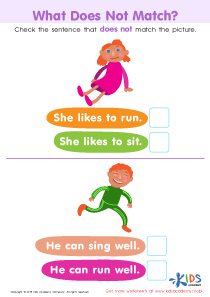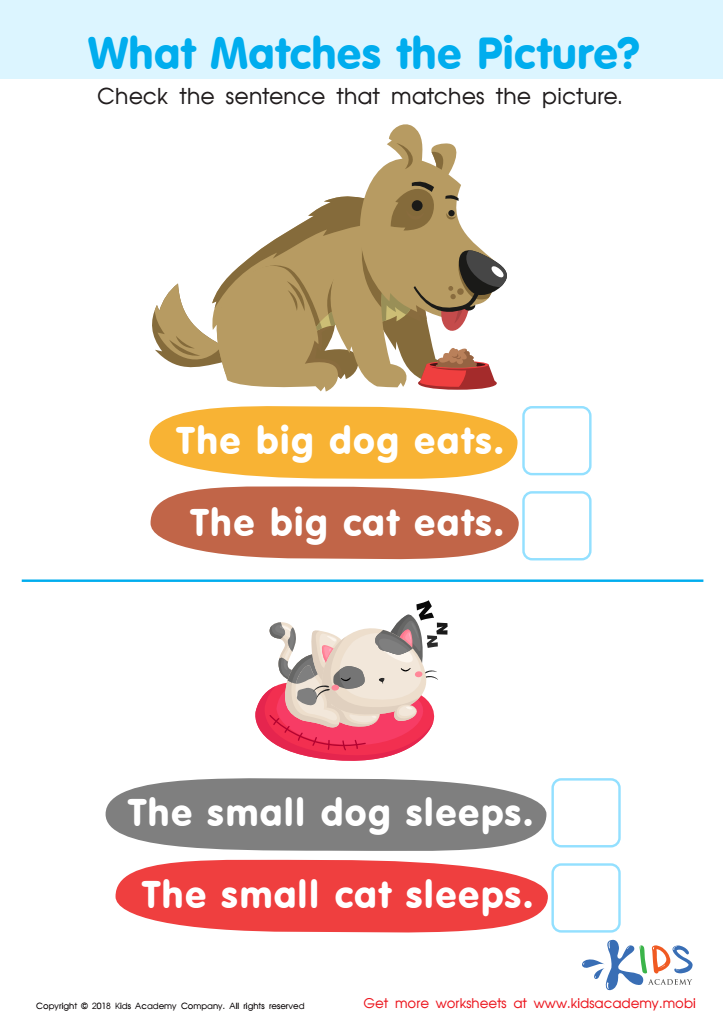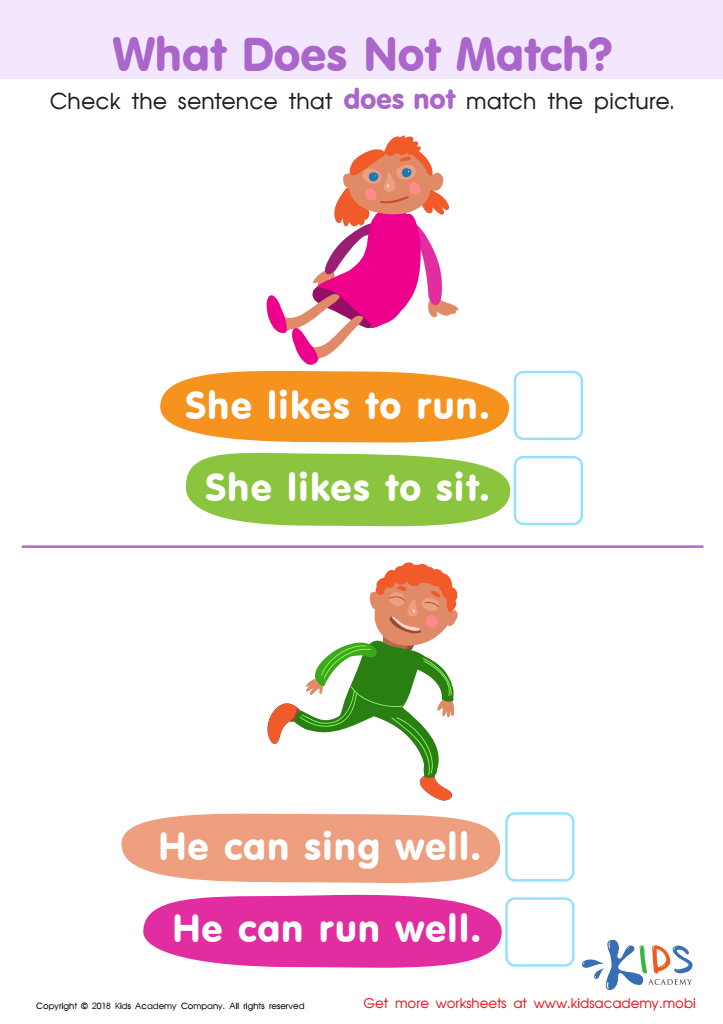Matching Sentences to Illustrations - Lesson for Kindergarten, Chapter - Literature
In the "Matching Sentences to Illustrations" lesson, kindergarteners will embark on an engaging journey through the realm of literature, focusing on the comprehension unit. This lesson is designed to enhance students’ understanding of how sentences and illustrations are interconnected, facilitating a deeper comprehension of texts. Through two captivating activities, the "What Matches the Picture? Worksheet" and the "What Does Not Match? Worksheet," students will be tasked with pairing sentences to their corresponding illustrations, and also identifying mismatches between text and images.
Learning to correlate sentences with illustrations is crucial for young learners as it lays the foundational skills for reading comprehension. This ability aids in visualizing the text, improving memory retention, and fostering a love for reading. By engaging in these activities, students will not only refine their comprehension skills but also enhance their critical thinking and attention to detail. These are invaluable skills that will benefit their academic journey across all subjects. Moreover, this lesson encourages creativity and imagination, as students explore the vivid world of illustrations and understand how words can paint pictures in their minds, making reading a more enjoyable and immersive experience.


-
Activity 1 / What Matches the Picture? Worksheet
Emerging readers use all sorts of strategies to strengthen their reading skills. Familiar pictures and repetitive text help them reinforce concepts they know and build their vocabularies. This paw-some worksheet lets them use the pictures of adorable pets and the repetitive phrasing of familiar high-frequency words to match the sentence to the picture appropriately. They'll feel successful as readers, and motivated to read more!
-
Activity 2 / What Does Not Match? Worksheet
Being able to use visual cues and repetitive text is a skill emerging readers need to strengthen. This colorful PDF lets them look at the pictures of the boy and the girl and use cues, visual discrimination and repetitive sentence beginning to decide which phrase does not match the picture. They'll also gain practice with high-frequency words, making them more automatic and easier to use when decoding bigger sentences in longer texts.



